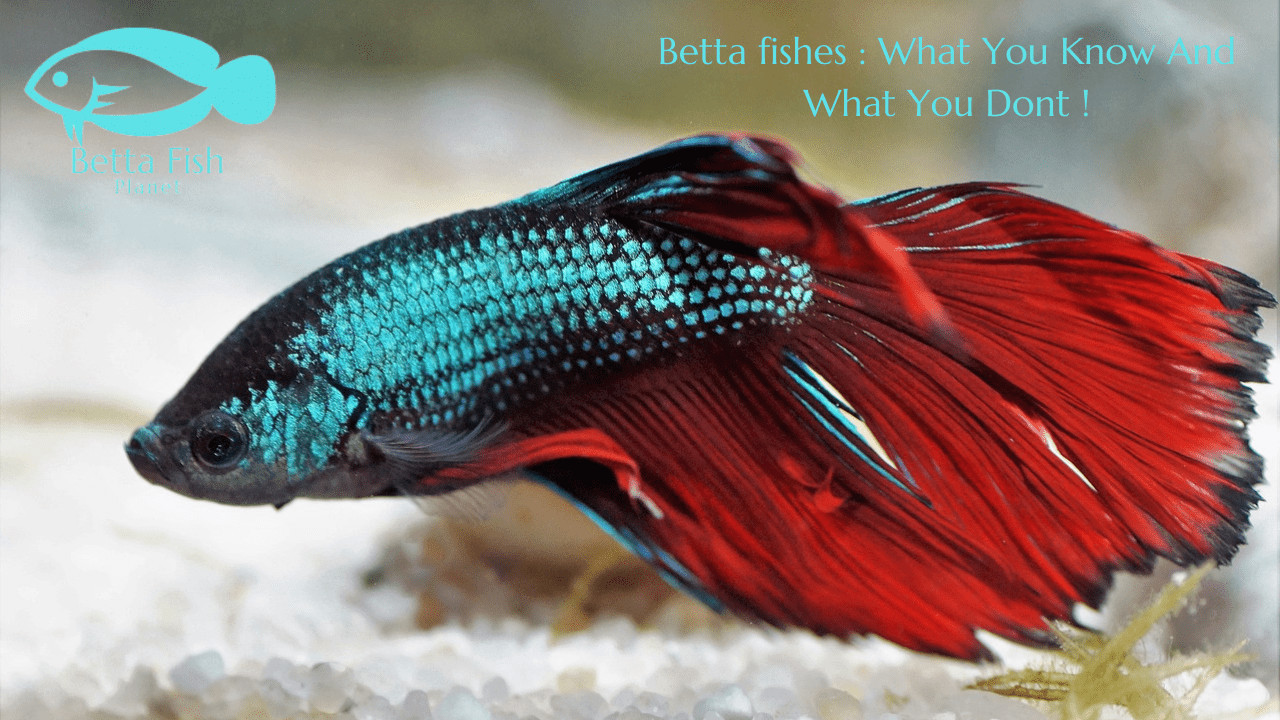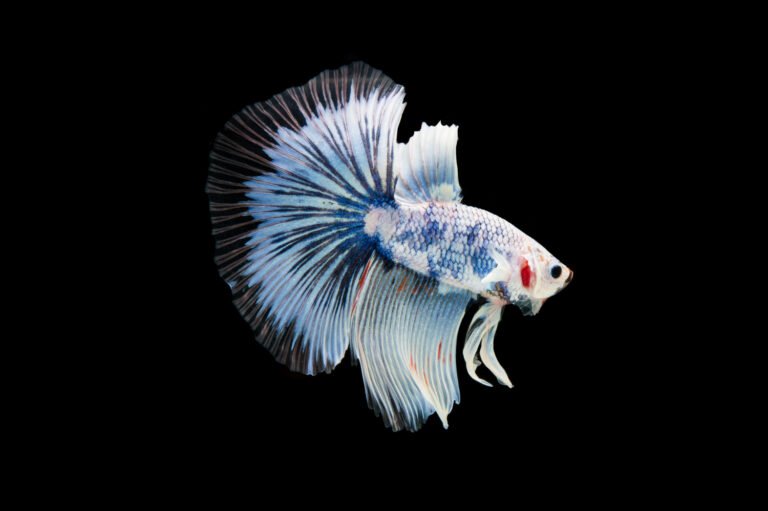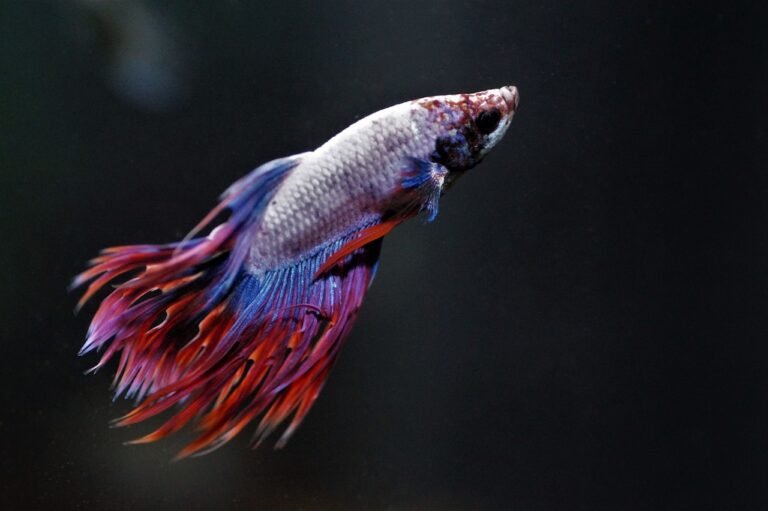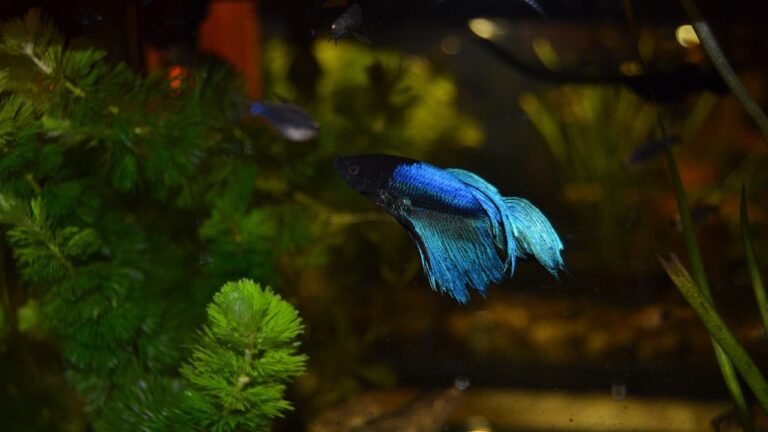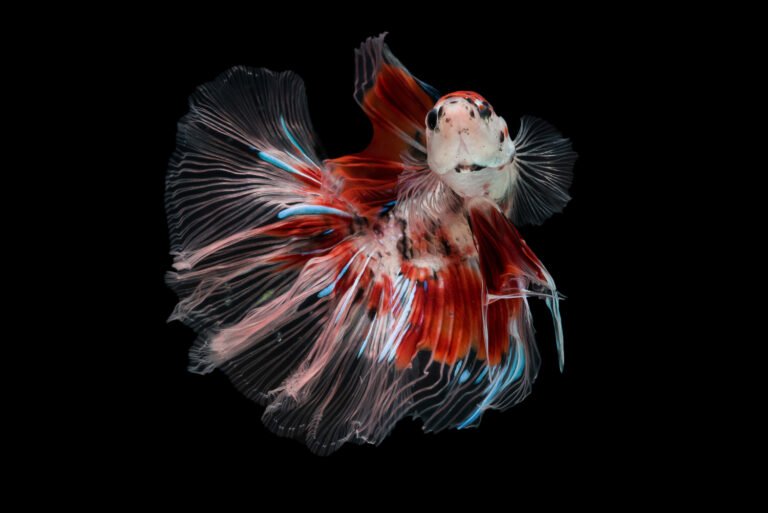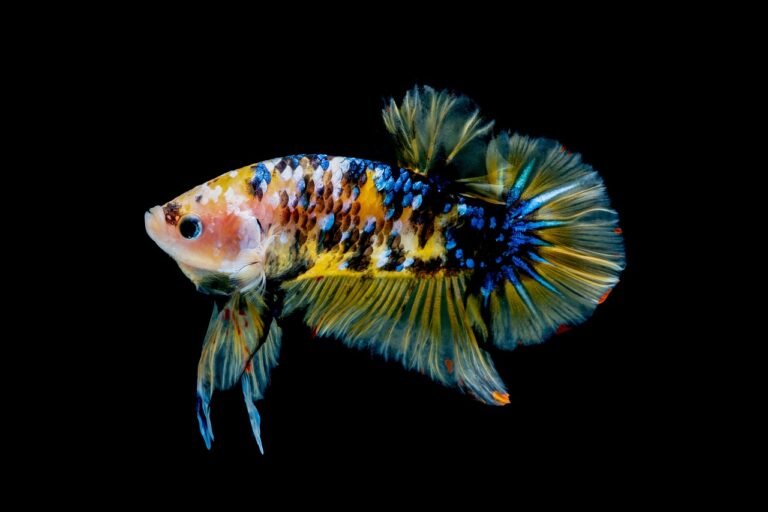Siamese fighting fish, or betta fish, are a type of fish that have become very popular among aquarium enthusiasts. They are brightly colored, have long flowing fins and tails, and each one has its own unique personality. These little creatures have won the hearts of many people around the world. If you’re thinking about getting a betta for your tank this guide will give you all the information you need to make sure they thrive.
Bettas come from Southeast Asia where they live in rice paddies and slow moving waters. Because of this they like warm water with lots of oxygen. They can breathe air from the surface using their labyrinth organ so they are able to survive in tanks or bowls without much surface area. However, it is still important to provide them with proper care and environment.
This guide will cover everything from tank requirements and water parameters to diet needs and potential health problems so keep reading if you want more details on any topic! Get ready for an adventure as we uncover what it takes to be successful at raising these beautiful creatures!
Betta Fish Tank Requirements
The first thing you need to do when setting up a home for your new pet is choosing the right size tank. While it is possible for them to live in small bowls or vases, larger tanks with more space are recommended because they allow better health conditions. A minimum of 2.5 gallons is usually suggested but 5 gallons or bigger would be even better.
Here are some essential tank requirements for your betta fish:
- Size – As mentioned before aim for at least 2.5 gallons but bigger always works too since there will be enough room for swimming around as well as keeping stable water parameters.
- Filtration – To keep clean oxygenated water use either basic sponge filter or hang-on-back filter which is necessary especially if there’s no other source of aeration available. Bettas prefer gentle water flow so adjust the output of your filter accordingly.
- Heating – Betta fish are tropical and they like warm temperatures ranging from 78°F to 82°F (25.5°C to 27.8°C). Therefore, it is important that you have an adjustable aquarium heater which will help maintain stable temperature in their tank.
- Lighting – Moderate lighting works best for bettas and can be achieved by using a standard aquarium light or even natural sunlight. However, too much light may stress them out so avoid it if possible.
- Decorations – Provide hiding spots with live or silk plants, driftwood, caves etc., where they can rest and explore around. Also consider adding broad-leaved plants since bettas love resting on them.
- Substrate – Use soft smooth substrate such as fine gravel or sand because rough ones could damage their fins.
By creating suitable conditions in the tank you will provide a comfortable home for your betta fish which in turn allows them to thrive and show off their vibrant colors as well as unique personalities.
Betta Fish Care Guide: Feeding and Nutrition
Feeding your betta fish properly is very important for its overall health. These carnivorous creatures need specific nutrients to stay healthy and display bright colors throughout their lives.
Variety is key when it comes to feeding bettas; therefore try offering different types of food including:
Betta pellets/flakes – These should be high quality ones designed specifically for this species containing all necessary vitamins minerals etc., but don’t overfeed because they have small stomachs that can easily get constipated
Frozen or alive foods: Give them frozen or alive foods such as brine shrimp, daphnia, or bloodworms once in a while. These contain necessary nutrients and imitate betta’s natural diet.
Vegetables: You can offer blanched vegetables like zucchini, peas, or spinach as an additional source of fiber and vitamins.
Remember that bettas have big appetites but overfeeding can cause health problems. Feed them what they can eat within 2-3 minutes twice per day.
Also, stick to a regular feeding schedule and remove any uneaten food promptly to prevent fouling of water. By giving your betta fish a balanced and varied diet you will keep it healthy, bright and full of energy.
Betta Fish Water Parameters
Maintaining the right water parameters is crucial for the health of your betta fish. These creatures are very delicate and sensitive to water quality; therefore they need specific conditions in order to thrive well.
Here are some key points on how to monitor and maintain the water parameters:
- pH level: Bettas prefer slightly acidic to neutral water with pH ranging from 6.5-7.5. Fluctuations in PH may stress your fish making them prone to diseases.
- Ammonia and Nitrite levels: Ammonia plus nitrite are toxic substances for bettas hence should be maintained at 0 ppm (parts per million). Do regular water changes and keep a cycled aquarium so as not to allow these harmful compounds build up.
- Nitrate levels: Nitrate is less toxic than ammonia/nitrite but still should be kept below 20 ppm. Regular water changes together with live plants can help control nitrates.
- Water hardness: Bettas prefer soft to moderately hard water with GH (general hardness) between 4-15 dGH (degrees of general hardness).
- Temperature: As mentioned earlier on, bettas do well in warm waters with temperatures ranging from 78°F to 82°F (25.5°C to 27.8°C). Use an aquarium heater for maintaining steady temperature.
It is important to regularly test your water parameters using a reliable test kit so as to ensure that they are within the required range. If any of them falls outside the recommended levels, take immediate action by doing water changes or adjusting filtration and maintenance routine accordingly.
Maintaining the Right Water Temperature for Betta Fish
One of the most crucial things in betta fish care is keeping the right water temperature. These tropical beauties come from Southeast Asia where they inhabit warm waters; therefore it’s necessary to provide them with stable temperature conditions.
The ideal water temperature for bettas should be between 78°F and 82°F (25.5°C to 27.8°C). Any deviation from this range can negatively affect their health; here is why it’s so important:
Metabolism and digestion: Being cold-blooded animals, metabolism and digestive processes of bettas depend on ambient heat. When it gets colder than usual, their metabolism slows down leading to reduced appetite and poor digestion.
Immune system function: Appropriate water temperature supports good immune response in bettas. Rapid changes or extremes of heat may weaken their defense mechanisms against diseases causing agents hence making them more vulnerable to infections.
Stress reduction: Bettas are very sensitive creatures which can easily get stressed by environmental alterations especially those related with temperatures. Therefore, keeping constant optimal range will help minimize stress levels thus promoting overall wellbeing
To keep the water temperature ideal, it is necessary to buy a good aquarium heater. Look for adjustable heaters that allow you to set and maintain the desired temperature range accurately. Also, consider using a reliable thermometer to regularly check the water temperature.
By providing your betta with the right water temperature, you will not only ensure their comfort but also enhance their overall health, vibrant colors, and active behavior.
Betta Fish Tank Size and Space Considerations
While bettas are often depicted as thriving in small bowls or vases, the fact is that these fascinating creatures need plenty of space to swim around in, explore their surroundings and exhibit natural behaviors. Therefore, it is important to provide them with an appropriately sized tank which will contribute greatly towards their well-being and longevity.
The minimum recommended tank size for one single betta fish is 2.5 gallons. However many experienced betta keepers recommend a 5-gallon or larger tank for optimal health and happiness of this species. Here’s why size matters when it comes to tanks:
Swimming space: Bettas are active swimmers who require enough horizontal room so they can move freely and exercise their muscles by swimming around; bigger tanks enable them to stretch out their fins more often while engaging in natural swimming patterns.
Water quality: Larger tanks offer a more stable environment with better water quality; this is because there is greater volume of water which dilutes toxins faster than smaller volumes would do. With more water volume fluctuations in parameters such as ammonia, nitrites and pH become less severe thus reducing stress on your betta fish.
Territorial behavior: Betta fish are territorial animals hence they need some personal space where they can feel secure within their own territories; having larger tanks provides them with such spaces thereby minimizing aggression among them due to overcrowding or lack of hiding places.
Decorations & enrichment: A bigger tank allows for creation of diverse environments through use of plants (live or artificial), driftwood, caves and other decorations; these items provide hiding spots as well as mental stimulation for bettas which promotes natural behaviors.
When choosing tank size consider not only minimum requirements but also potential growth of your betta and possibility of adding tankmates in future; remember that larger tanks offer more stable environments thus contributing greatly towards overall health and happiness of this species.
Betta Fish Tank Setup: Decorations and Accessories
Creating an interesting looking aquarium setup is not only visually appealing but also important for the well-being of your betta fish. By incorporating appropriate decorations and accessories you can provide a stimulating environment that encourages natural behaviors while promoting good health in these animals.
Here are some key elements to consider when setting up your betta fish tank:
- Live or Silk Plants: Bettas love resting on broad-leaved plants and swimming through lush foliage. Live plants not only provide a natural aesthetic but also help oxygenate the water and offer hiding places. If live plants are not an option, high-quality silk plants can be used instead.
- Driftwood & Caves: Driftwood pieces or caves create hiding spots where bettas can rest; such decorations mimic their natural habitat too. Additionally, they add visual interest to the tank by breaking up open spaces within it.
- Substrate: Use soft smooth substrates like fine gravel or sand which will prevent fin damage. Darker substrates may also enhance the colors of your betta fish making them appear more vibrant against such backgrounds.
- Decorative Rocks & Ornaments: Well chosen rocks or ornaments can add beauty to any aquarium while providing additional hiding places or resting areas for your betta fish. However avoid sharp-edged ones since they could tear delicate fins
- Lighting: Bettas like medium lighting, so think about using a low-wattage aquarium light or natural sunlight. You can also adjust the lighting to mimic the natural day/night cycle.
- Heater and Thermometer: An adjustable aquarium heater and reliable thermometer are necessary for keeping the water at the right temperature for your betta fish.
When setting up your tank decorations, try to create different areas for swimming, resting, and hiding. This will give your betta a more interesting environment to live in, which will help it behave naturally and stay healthy.
Wild Betta Fish: Where Do They Come From?
Although they have become popular pets around the world, betta fish originally come from the wilds of Southeast Asia. By learning about wild bettas’ natural habitats and behaviors, we can better understand how to care for them in captivity.
Most captive bettas belong to the species Betta splendens, also known as Siamese fighting fish. These colorful creatures are found in rice paddies, slow-moving streams and shallow waters in Thailand, Cambodia, Vietnam and other parts of Southeast Asia.
In their native homes wild bettas live in warm shallow waters with lots of vegetation for hiding places and spawning sites. Such environments often experience seasonal changes characterized by droughts alternating with heavy rains that have influenced unique adaptations of this fish.
One such adaptation is an organ called labyrinth which allows them to breathe air directly from the atmosphere when oxygen levels are low in their aquatic environment, even enabling them to move short distances over land and search new habitats temporarily.
Wild bettas display vibrant colors and intricate fin patterns that serve as important signals during courtship displays or territorial fights among males. In nature males establish territories where they build bubble nests attract females protect offspring
Territorial Behavior: In the wild, male bettas establish and defend territories, engaging in elaborate bubble-nesting behaviors to attract females and protect their offspring. This territorial nature has contributed to their reputation as “Siamese fighting fish.”
Vibrant Colors and Patterns: The bright colors and complex fin patterns of wild bettas act as important signals for courtship and territorial displays. These traits have been selectively bred for and intensified in captive populations of betta fish.
Knowing about the natural habitats and origins of betta fish can help aquarium hobbyists create more naturalistic and stimulating environments for their pets. By recreating some features of their native habitats such as warm shallow waters with lots of vegetation and hiding places, betta fish can thrive better while showing off their natural behaviors.
Betta Fish Habitat and Origin
Betta fish, also known as Siamese fighting fish, are native to the tropical regions of Southeast Asia, primarily Thailand, Cambodia, and Vietnam. Their natural habitats are characterized by warm, shallow waters, such as rice paddies, slow-moving streams, and marshes.
These unique environments have shaped the evolution and adaptations of betta fish, allowing them to thrive in conditions that would be challenging for many other aquatic species. Here’s a closer look at the betta fish’s habitat and origin:
- Rice Paddies: One of the most iconic habitats for wild bettas is the rice paddies of Southeast Asia. These shallow, nutrient-rich waters provide ample vegetation for shelter and spawning, as well as a consistent supply of insects and small crustaceans for food.
- Slow-Moving Streams and Marshes: Wild bettas also inhabit slow-moving streams, canals, and marshes, where they can find refuge among the dense aquatic vegetation and shallow waters. These environments often experience seasonal fluctuations, with periods of drought and heavy rainfall.
- Adaptations to Seasonal Changes: Bettas have evolved remarkable adaptations to survive the seasonal changes in their natural habitats. Their labyrinth organ allows them to breathe atmospheric air, enabling them to survive in oxygen-deprived waters or even temporarily navigate on land in search of new habitats.
- Territorial Behavior: In the wild, male bettas establish and defend territories, engaging in elaborate bubble-nesting behaviors to attract females and protect their offspring. This territorial nature has contributed to their reputation as “Siamese fighting fish.”
- Vibrant Colors and Patterns: The vibrant colors and intricate fin patterns of wild bettas serve as important signals for courtship and territorial displays. These characteristics have been selectively bred and enhanced in captive betta populations.
Understanding the natural habitats and origins of betta fish can help aquarium enthusiasts provide more naturalistic and enriching environments for their captive pets. By replicating aspects of their native environments, such as warm, shallow waters with ample vegetation and hiding spots, betta fish can thrive and exhibit their natural behaviors.
Common Betta Fish Diseases and How to Prevent Them
Betta fish are generally hardy creatures but they can still fall ill if not properly cared for or kept in an unhealthy environment. Understanding common diseases that affect them will enable you to take necessary precautions thus ensuring your finned friend lives a long healthy life.
Here are some common illnesses that affect these beautiful creatures along with tips on how to prevent them:
- Fin Rot: This is caused by bacteria which eat away at the fins resulting into ragged edges or even complete loss of finnage. Maintain good water quality by doing regular partial water changes; avoid sharp decorations in tanks because they can cause injuries which may lead to fin rot; treat any signs of damaged fins promptly with appropriate medication.
- Ich (White Spot Disease): It is a parasitic infection characterized by white spots resembling grains of salt scattered all over the body surface including fins. Ensure proper water parameters are maintained at all times; do not overcrowd tanks; quarantine new arrivals before introducing them into main tank so as to prevent spread of ich within community setup.
- Velvet Disease: This disease gives affected individuals a dusty/golden appearance due to the presence of external parasites on their skin. Quarantine new fish for observation before adding them into the main tank; keep water quality high by performing regular partial water changes; treat promptly if symptoms appear.
- Bacterial Infections: There are different types of bacterial infections that can affect bettas such as columnaris, mouth fungus among others. Keep clean conditions in tanks by doing regular water changes; avoid overfeeding which leads to accumulation of uneaten food particles at bottom of tank thus creating breeding ground for bacteria; treat any signs of illness immediately with appropriate medication.
- Swim Bladder Disorder: This affects ability to swim properly caused by overfeeding, constipation or environmental factors like sudden change in temperature. Feed variety foods containing fiber content which helps prevent constipation in bettas; maintain stable parameters within acceptable range throughout the year especially during winter season when temperatures tend to fluctuate more frequently than other times; consider fasting your betta if symptoms persist beyond a few days.
Prevention is better than cure when it comes to diseases affecting betta fish. Watch out for any unusual behavior or physical appearance changes in your pet, perform partial water changes regularly and ensure optimal conditions are maintained all the time. Seek advice from knowledgeable aquarium specialists whenever necessary and always have a quarantine tank ready just in case need arises.
Being proactive keeping clean stress free environment will greatly reduce chances getting sick hence enabling them live longer healthier lives
Betta Fish Breeding and Reproduction
Breeding betta fish can be a rewarding and fascinating endeavor for experienced aquarium enthusiasts. These beautiful fish exhibit intricate courtship behaviors and unique parenting techniques that are truly captivating to observe.
Before embarking on betta fish breeding, it’s essential to have a thorough understanding of their reproductive process and the necessary preparations. Here’s an overview of betta fish breeding and reproduction:
Choosing Breeding Pairs: Select healthy, lively bettas with desirable traits that you want the offspring to have. Typically, males with long flowing fins and bright colors are preferred while females should be plump and active. Conditioning
Conditioning the Breeding Pair: Proper conditioning is necessary for successful breeding. You should gradually increase the quality and quantity of live or frozen foods such as brine shrimp or bloodworms to ensure good health and readiness for spawning.
Setting Up the Breeding Tank: Set up a separate breeding tank with clean aged water and a suitable spawning mop or broad-leaved plants where the male can build his bubble nest. Keep the water temperature at 78°F – 82°F (25.5°C – 27.8°C).
Introducing the Pair: Put both male and female into the breeding tank carefully so that they can exhibit courtship behaviors and perform spawning rituals. Watch closely for any signs of aggression; if necessary, separate them immediately.
Spawning & Parental Care: The male will take care of eggs after they are laid by gently picking them up in his mouth one by one then spitting them into a bubble nest where he guards them until they hatch; fry need special care & feeding with microscopic foods.
Raising Fry: As fry grow bigger over time, introduce larger food like finely crushed flakes or live brine shrimp; do regular water changes & provide enough hiding spots to prevent aggressive behavior among fry which may lead to cannibalism.
Breeding betta fish requires patience, commitment, knowledge about their reproductive habits among other things; therefore it’s advisable that you conduct thorough research beforehand as well as seek advice from experienced breeders who have done this before because without proper preparation coupled with care taking part in such an activity can be quite fulfilling when done right.
Maintaining the Ideal Water Temperature for Betta Fish
Keeping the right water temperature is very important for the health and well-being of betta fish. These beautiful tropical creatures come from Southeast Asia where they inhabit warm waters all year round.
The ideal temperature range for bettas is between 78°F and 82°F (25.5°C to 27.8°C). Any deviation from this range could adversely affect their metabolism, immune system function as well as overall physical condition. Here’s why it matters:
Metabolism & Digestion: Being ectothermic animals means that bettas’ metabolic rates are directly influenced by ambient temperatures around them including those of water they live in. Cooler temps may slow down their metabolism leading to reduced appetite and poor digestion while higher ones might speed up metabolic processes thereby causing stress.
Immune System Function: Proper water temperature also helps support good immune function in bettas; any fluctuation or extreme change could weaken their defense mechanisms against diseases thus making them more vulnerable to infections.
Stress Reduction: Bettas are known to be highly sensitive towards changes within their environment especially when it comes to temperature fluctuations which can cause significant amounts of stress on them. Therefore keeping stable optimal temp ranges would minimize such stresses hence promoting general welfare.
Breeding & Spawning: If one intends breeding these fish then maintaining appropriate water temperatures becomes critical during spawning periods through fry development stages otherwise deviations from required levels may negatively affect both breeding success rates as well offspring health status.
To keep the water at the right temperature, you need a good aquarium heater. Look for adjustable heaters that let you set and maintain the desired temperature range accurately. Also, use a reliable thermometer to check the water temperature regularly.
Getting the correct water temperature is important for bettas because it ensures their comfort as well as contributes to their overall health, bright colors, and active behavior. A stable and optimal temperature is an essential part of creating an environment in which these fascinating fish can thrive.
Water for Betta Fish: Quality and Conditioning
The most crucial thing when caring for betta fish is maintaining high-quality water. These creatures are delicate and can be easily affected by any imbalance in their surroundings which may lead to negative consequences on their health or well-being.
In order to keep your betta healthy, it is necessary that you understand what constitutes good quality water and how to condition it properly. Here’s what you should know:
Dechlorination: Tap water contains chlorine among other chemicals that can harm bettas; therefore always use a good dechlorinator before adding any tap water into your betta tank.
pH and Hardness: Bettas prefer slightly acidic to neutral waters with pH ranging from 6.5-7.5 while general hardness (GH) should be between 4-15 dGH (degrees of general hardness). Test your water and adjust accordingly so as not to deviate from these ranges.
Temperature: As mentioned earlier on, bettas do well in warm temperatures ranging between 78°F – 82°F (25.5°C – 27.8°C). You will need an adjustable aquarium heater that can help maintain this range of temperatures.
Aging and Aeration: It is advisable to age & aerate new water for at least 24 hours before introducing it into your betta’s tank; this allows chlorine gas plus other gases dissolve out thereby making the environment stable & oxygen-rich for your fish.
Water Changes: Regular partial water changes are necessary to keep the quality of water high. Change 25-50% of the water weekly or more often if need be so as to get rid of accumulated wastes and replenish essential minerals.
Filtration: A well-sized and maintained filter is important in keeping the water clean and oxygenated. However, ensure that there is gentle current since bettas prefer slow-moving waters.
By giving priority to water quality and following correct practices of conditioning it; you will create a healthy stress-free environment for your betta fish. Clean well-balanced water acts as a foundation for a thriving aquatic ecosystem thus ensuring long-term health & happiness of your betta.
Conclusion: The Joys of Betta Fish Ownership
Congratulations! You have come to the end of this complete guide on how to take care of betta fish. At this point, you should be equipped with enough knowledge about these fascinating creatures and what it takes to provide them with an environment where they can thrive.
Having a betta fish is not just like having any other pet; it’s more than that – it’s an amazing journey filled with lots of fun moments. These colorful little swimmers will steal your heart away within no time through their vibrant appearance, graceful movements as well as inquisitive nature.
Therefore, as you start off being a parent to one or more bettas; always remember that looking after them requires patience, commitment plus genuine affection towards these wonderful animals. Giving them appropriate tanks sizes, maintaining right water conditions and feeding balanced diets will not only keep them healthy but also reveal their true beauty which is indeed breathtaking
Observing your betta fish as they explore their underwater world, create intricate bubble nests, and display natural behaviors is truly mesmerizing. Every interaction with your finned friend will bring you happiness and a greater understanding of the marvels within the aquatic realm.
No matter if you’re an experienced aquarium hobbyist or new to keeping bettas, there is no limit to the rewards that come with being a responsible owner. Embrace the difficulties and treasure those moments where you can’t help but stare in amazement at these incredible animals.
Lets us know about your personal experiences in the comment section with the bettas and how you are taking care of them. We will use you experience and let other help to let this beautiful fish a perfect cheerful life.

